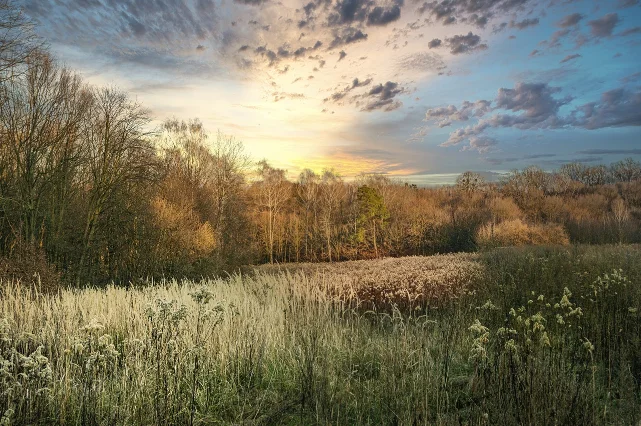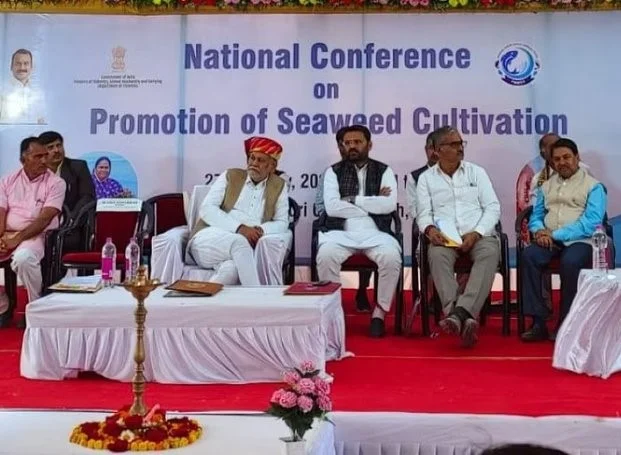A research study carried out across seven districts of Maharashtra has revealed that agricultural practices such as tillage and afforestation are causing harm to the savanna biodiversity. Savannas are ecosystems characterized by an abundance of grasses and few trees, typically found in temperate and tropical regions. The study, titled ‘Tillage agriculture and afforestation threaten tropical savanna plant communities across a broad rainfall gradient in India,’ was published on November 22, 2023, in the Journal of Ecology by the British Ecological Society. The research involved a team of five scholars: Ashish N. Nerlekar, Avishkar Munje, Pranav Mhaisalkar, Joseph W. Veldman, and Ankila J. Hiremath from Fergusson College, the Department of Ecology and Conservation Biology at A&M University in Texas, Brandenburg Technical University in Germany, and Ashoka Trust for Research in Ecology and the Environment in Bengaluru.
To choose tree plantations, the researchers located areas that were forested after the colonial period (since 1947). Many of these plantations consist of foreign species like Gliricidia sepium (from the pea family), Eucalyptus globulus (from the myrtle family), and Cassia siamea (from the pea family). Additionally, there are native tree plantations commonly featuring Azadirachta indica (from the mahogany family), Acacia catechu (from the pea family), and Dalbergia sissoo (from the pea family). Livestock and wild herbivores graze in all of these locations.
Ashish N. Nerlekar mentioned that we conducted the research early in 2020 across seven districts of Maharashtra: Nashik, Pune, Ahmednagar, Satara, Solapur, Kolhapur, and Sangli. The research paper was published last year. We collected samples during September and October 2021, which marks the peak growing season for herbaceous plants.
Mr. Nerlekar explained that the reason for conducting this study is because Savanna biodiversity hasn’t been well-documented in many tropical Asian regions. The study covered an area of 45,000 square kilometers.
In western Maharashtra, ancient savannas stretch across a wide range of rainfall levels and are becoming increasingly scarce due to changes in land use like agriculture and afforestation. To grasp the environmental impacts of these changes, we studied the herbaceous plant communities—shrubs, grasses, flowering plants, and ferns without woody tissues—in old-growth savannas at 60 sites. Each site had 15 samples, categorized into four land-use types: old-growth savannas, tree plantations, tillage agriculture, and fallow agricultural land.
Mr. Nerlekar elaborated that our findings show how converting old-growth savannas into tillage agriculture destroys unique herbaceous plant communities that don’t naturally recover on fallow land. Similarly, afforestation changes the composition of savanna plant communities and reduces the diversity of native plants.
Researchers indicate that agricultural fallows are unlikely to contribute to the natural restoration of savannas in tropical India. Without deliberate efforts to restore these ecosystems, tillage agriculture leads to a permanent decline in savanna plant diversity.
Regarding tillage agriculture, the researchers examined sites actively used for cultivating cash and food crops like millets, pigeon pea, corn, soybean, sugarcane, and cotton, which involve tilling the soil. Site selection also considered accessibility and obtaining permission from farmers to sample their fields. For fallow lands, they chose areas showing signs of prior cultivation, such as raised earth bunds around the parcel and evidence of nearby tillage agriculture.
Avishkar Munje explained, “Various factors are reshaping Earth’s grassy biomes, but among them, changes in land use stand out as a significant and widespread contributor to biodiversity decline in tropical savannas. The plant communities in tropical savannas are highly sensitive to alterations in land use that disrupt the traditional patterns of frequent fires and herbivore activity, or introduce new stresses that reduce the underground bud reserves.”
Tillage agriculture harms savanna communities by destroying the underground parts of long-lasting perennial plants, which take a very long time to recover after farming stops. Mr. Munje also mentioned, ‘Besides tillage agriculture, tree planting—whether for wood production, forest restoration, or carbon capture—is becoming a growing threat to savannas.’
The tropical savannas in India are home to at least 206 unique plants, many of which are endangered globally. Maharashtra’s savannas sustain the livelihoods of numerous Dhangar, a pastoral community, by providing grazing land for their cattle. Mr. Munje added, ‘The Dhangar people deserve recognition for preserving the natural patterns of old-growth savannas through their traditional practices of controlled burning and managing herbivores.’
The researchers are worried that India’s commitment to restore millions of hectares under the Bonn Challenge might wrongly focus on afforesting old-growth savannas. The Bonn Challenge aims to restore 150 million hectares of deforested and degraded land by 2020 and 350 million hectares by 2030. India has pledged to restore 26 million hectares of degraded and deforested land by 2030.
Pranav Mhaisalkar expressed, “We hope that conservation experts and environmental policymakers will consider our findings as proof of the negative impact of planting trees in old-growth savannas and will establish measures to prevent afforestation. Despite the strong emphasis on climate change in ecology and conservation, our findings from India’s savannas remind us not to overlook the immediate threat posed by changes in land use to tropical biodiversity.”





